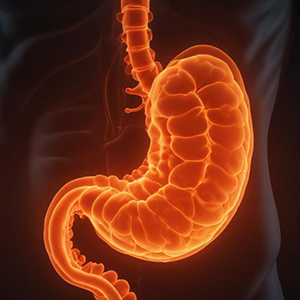
APD (Acid Peptic diseases) GERD, PUD, Dyspepsia

(APD) GERD, PUD, Dyspepsia
Acid Peptic Diseases (APD) encompass a group of disorders characterized by excessive acid production in the stomach, leading to various symptoms and complications. Here's an overview of GERD, PUD, and Dyspepsia:
GERD (Gastroesophageal Reflux Disease)
Definition
: Chronic backflow of stomach acid into the esophagus, causing symptoms and complications.Symptoms:
1. Heartburn : Burning sensation in the chest and throat
2. Regurgitation : Food and acid flow back up into the mouth
3. Dysphagia : Difficulty swallowing
4. Chest Pain : Pain in the chest, arm, or jaw
Treatment:
1. Lifestyle Changes : Weight loss, dietary modifications, avoiding trigger foods
2. Antacids : Neutralize stomach acid
3. Histamine-2 (H2) Blockers : Reduce acid production
4. Proton Pump Inhibitors (PPIs) : Block acid production
5. Surgery : Fundoplication, LINX Reflux Management System
PUD (Peptic Ulcer Disease)
Definition : Open sores in the lining of the stomach or duodenum (first part of the small intestine), caused by excessive acid production.Symptoms:
1. Abdominal Pain : Burning, gnawing pain in the upper abdomen
2. Nausea and Vomiting : Vomiting blood or coffee ground-like material
3. Bleeding : Blood in stool or black, tarry stools
4. Weight Loss : Loss of appetite, weight loss
Treatment:
1. Antibiotics : Eradicate Helicobacter pylori (H. pylori) bacteria
2. PPIs : Block acid production
3. H2 Blockers : Reduce acid production
4. Sucralfate : Protect the ulcer site
5. Surgery : Required in severe cases, such as perforation or bleeding
Dyspepsia
Definition : Chronic or recurrent upper abdominal symptoms, including pain, discomfort, and bloating.
Symptoms:
1. Abdominal Pain : Upper abdominal pain, discomfort, or bloating
2. Nausea and Vomiting : Vomiting, regurgitation, or feeling queasy
3. Bloating and Gas : Feeling full, bloated, or gassy
4. Loss of Appetite : Decreased appetite, weight loss
Treatment:
1. Lifestyle Changes : Dietary modifications, stress management
2. Antacids : Neutralize stomach acid
3. H2 Blockers : Reduce acid production
4. PPIs : Block acid production
5. Prokinetics : Enhance gastric emptying
6. Antidepressants : Manage symptoms, improve quality of life
Common Causes and Risk Factors
1. Helicobacter pylori (H. pylori) Infection : Bacterial infection that can cause PUD and dyspepsia
2. Nonsteroidal Anti-Inflammatory Drugs (NSAIDs) : Can cause PUD and dyspepsia
3. Smoking : Increases risk of PUD and GERD
4. Obesity : Increases risk of GERD
5. Stress : Can exacerbate symptoms of APD
Diagnosis and Testing
1. Upper Endoscopy : Visual examination of the esophagus, stomach, and duodenum
2. Barium Swallow : X-ray examination of the esophagus
3. Endoscopy with Biopsy : Tissue sampling for histological examination
4. Ambulatory Acid Probe Test : Measures acid reflux in the esophagus
5. Urea Breath Test : Detects H. pylori infection
